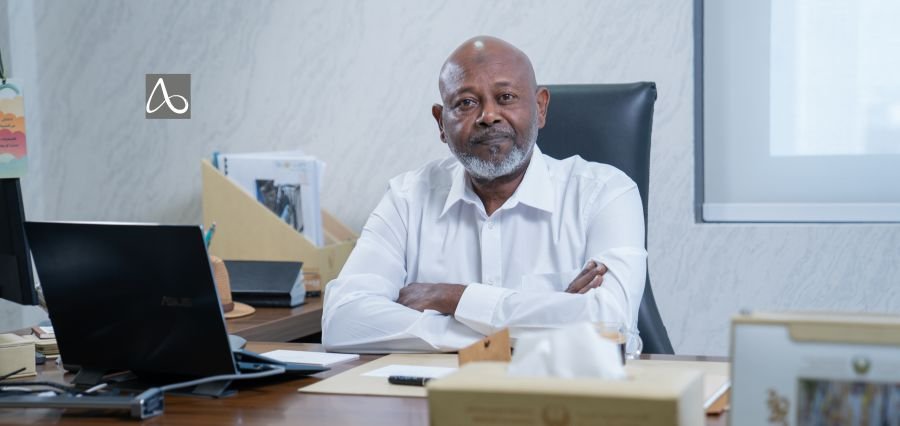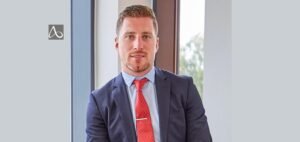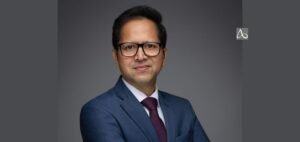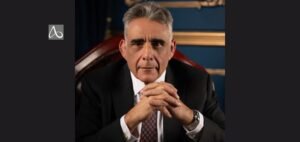There are industry leaders in each of their respective fields who see beyond the short-term dollars to the long-term difference that their work can make in people’s lives and in the world. Among a select few visionaries who have made spirituality a lifetime profession is Navitas Engineering & Contracting CEO and Managing Director Saliem Saliem. His path, guided by an engineering background and increasing knowledge of the world’s energy needs, is one of gradual discoveries of the promise of renewable energy. He has been consistent in matching innovation with responsibility, from overcoming operational issues in the beginning stages of his career to leading megaprojects for Siemens and GE.
Apart from leading Navitas today, he is also an author whose books are motivating the future generation of engineers and leaders. Leadership, as he believes, is less about achieving something technically but developing resilience, inspiring young people, and building a legacy of movement for reason.
What inspired you to dedicate your career to renewable energy, and how has that shaped your leadership journey?
My inspiration for pursuing renewable energy came from two interwoven threads: my engineering background and my conviction that energy is the cornerstone of human progress. My dedication to renewable energy wasn’t a singular moment but a steady awakening. From the outset but especially during my tenure at TAQA Transmission in the 1990s, I witnessed first-hand the sector’s reliance on traditional power frameworks.
That sparked in me a simple yet profound question: Could we address energy needs sustainably and responsibly? This realization planted the seed: if energy is the driver of development, then clean and sustainable energy must be the driver of a better future. That vision became my compass.
Over a decade at Siemens and then GE Grid Solutions, I engaged with advanced systems, and the answer became clear: innovation must align with environmental stewardship and culture needs which reflect human basic principle.
This passion, rooted in enduring experience, has shaped my leadership by reinforcing a dual commitment: to innovation and social responsibility. I’ve championed forward-looking projects that adhere to modern engineering excellence while always asking, “Does this serve people, planet, and future generations?”
Were there pivotal moments or challenges early in your career that transformed the way you lead today?
Absolutely. My early years (1993–2004) as an Operation & Maintenance Engineer and later Team Leader with TAQA Transmission and DAL Group were formative. These roles thrust me into operational complexity under real-world constraints—tight schedules, unpredictable faults, and limited budgets. There was one transmission-station outage during peak load that tested our collective resolve; it taught me the value of steady confidence, rapid decision-making, and solidarity.
Another milestone was transitioning to Siemens, where I moved from senior project engineering into project management. I learned that leadership isn’t only about technical oversight but empowering multidisciplinary teams, communicating clearly, and managing stakeholder expectations. Those experiences taught me: leadership requires empathy as much as expertise.
As CEO & Managing Director, what personal principles or values anchor your decision-making?
Three core values define every decision I make:
- Integrity: “Trust is the cornerstone of leadership. My choices must stand on transparency and ethical standards, whether pursuing a contract or navigating regulatory complexities.”
- Excellence: I believe in doing things right—meticulous planning, precision in execution, and uncompromising quality.
- Empowerment: I lead best by bringing out the best in others. I invest in talent growth, giving my team authority and accountability to excel.
These values guide everything—from strategic partnerships, like when I stepped in as Managing Partner and oversaw business development, to daily choices that shape our workplace culture. These principles make my decision-making both principled and pragmatic.
Do you see leadership in renewable energy as more about innovation, responsibility, or legacy? If so, why?
Leadership in our field is truly all three, interwoven:
- Innovation: Without it, renewable energy stagnates. We must push technologies like smart grids, energy storage, and automation—and foster an environment where fresh ideas thrive.
- Responsibility: We aren’t just building projects—we’re shaping environments, communities, and economies. Decisions must reflect social and environmental stewardship.
- Legacy: We lead not just for today, but for the sustainability of tomorrow. The institutions, projects, and cultures we build should endure and inspire.
Our success lies at the nexus of these pillars, and that’s precisely how I strive to lead.
Renewable energy is evolving rapidly. How do you ensure your leadership stays ahead of industry shifts?
Staying ahead means staying curious and connected, immerse myself in global industry networks. At Navitas, we integrate research and pilot projects into our workflow, when considering new automation or monitoring solutions, we start small testing, analysing, and scaling strategically focusing on the three pillars.
- Continual learning: I actively engage with industry conferences, webinars, and technical symposiums—whether on solar integration, grid innovation, or automation trends.
- Strategic partnerships: Navitas thrives through partnerships and collaborations that bring us cutting-edge expertise and fresh perspectives.
- Internal innovation culture: Even as a small but agile firm (10–50 employees), we encourage everyone—from engineers to site managers—to contribute ideas and develop pilot solutions.
This dynamic model lets us anticipate and adapt to new technologies and market shifts with agility. Equally important is surrounding myself with forward-thinking people. A CEO’s strength is not knowing everything, but creating an environment where knowledge flows upward from experts and engineers. By keeping Navitas agile and curious, we turn industry into opportunities.
How do you integrate technological innovation with practical execution in large-scale renewable projects?
Effective integration requires bridging two cultures: visionary thinking and ground-level pragmatism, the challenge in renewable energy projects is not just about adopting technology, but implementing it at scale with reliability
- We begin with clear project frameworks—design, risk assessment, resource allocation—so innovation doesn’t drift into ambiguity.
- During execution, we maintain rigorous controls and workflows while remaining open to adjustments informed by field realities. For example, in a potential smart-grid–enabled T&D upgrade, we’d prototype the automation logic in controlled environments, then phase in deployment—learning, adapting, refining.
- The key is balance: anchoring progress with structure, while empowering flexibility for breakthrough performance. Execution is never linear. We build continuous feedback into our projects, allowing us to adapt innovations as real-world conditions evolve.
By respecting both the creativity of innovation and the discipline of engineering, we make technology practical, impactful, and lasting.
- How do you cultivate resilience and adaptability in your teams, especially in such a competitive and fast-evolving industry?
“Resilience thrives in two ways: through trust and through experience, I empower teams by offering support and autonomy, letting them own tasks, control decisions, and learn from challenges, within defined boundaries.”
We cultivate adaptability by rotating responsibilities and encouraging cross-disciplinary training. That way, when unexpected challenges arise, the team can pivot quickly. After completing a challenging project, we conduct debriefs, not to assign blame, but to analyze learnings. What went well? What could have gone better? It’s a space for reflection and growth.
This combination builds confidence and resourcefulness throughout the organization, by fostering a culture where people feel secure and empowered, adaptability becomes second nature.
As a leader, how do you balance empowering your people with holding them accountable for results?
By combining clarity, support, and feedback:
- Each team member understands objectives and receives the resources needed to succeed.
- Accountability is built into the process, regular milestones, clear deliverables, and support checkpoints.
- When goals aren’t met, I focus on understanding why rather than blaming. Was there insufficient information? Did our execution plan need refining? The emphasis is on constructive course-correction.
- Success is celebrated openly, reinforcing the value of initiative aligned with responsibilities.
This approach keeps empowerment from becoming unchecked and ensures accountability remains rooted in support and mutual trust. This balance ensures empowerment remains productive, and accountability remains fair.
When you think of your legacy, what do you want your leadership in renewable energy to stand for?
I aspire for my legacy to embody a triple promise:
- Sustainable impact: Projects that continue delivering value to communities long after completion.
- Institutional integrity: A company culture built on trust, ethical leadership, and employee growth.
- Generational inspiration: To set a benchmark for upcoming engineers and leaders—showing that technical excellence and environmental stewardship can—and should—go hand in hand.
“When I look back, I want Navitas to stand as a beacon of quality, conscience, and positive impact.”
What ambitions or goals continue to drive your journey forward at Navitas?
Allow me to quote what Denzil Washinton onetime said “Dreams without goals are just a dream, and ultimately, they fuel disappointment, on the road to achieve your dreams you must apply discipline but more importantly consistency, because without commitment you will never start but without consistency you will never finish”
There are three interlinked ambitions that motivate me every day:
- Expansion into innovative markets: I aim to steer Navitas toward projects involving energy storage, smart grid integration, and hybrid renewable systems to broaden our technical leadership.
- Human capital development: I want Navitas to become a training ground for the region’s next generation of renewable energy professionals—through structured mentorship, certifications, and thought leadership.
- Regional partnerships: I’m steering Navitas toward collaborations that amplify our impact, engaging with universities, research entities, and international technology partners to elevate our engineering depth.
Together, these goals ensure that Navitas continues evolving, innovating, and contributing meaningfully to the clean energy transformation.
Read Also: Top Impactful Leaders in the Renewable Energy Industry to Watch in 2025




